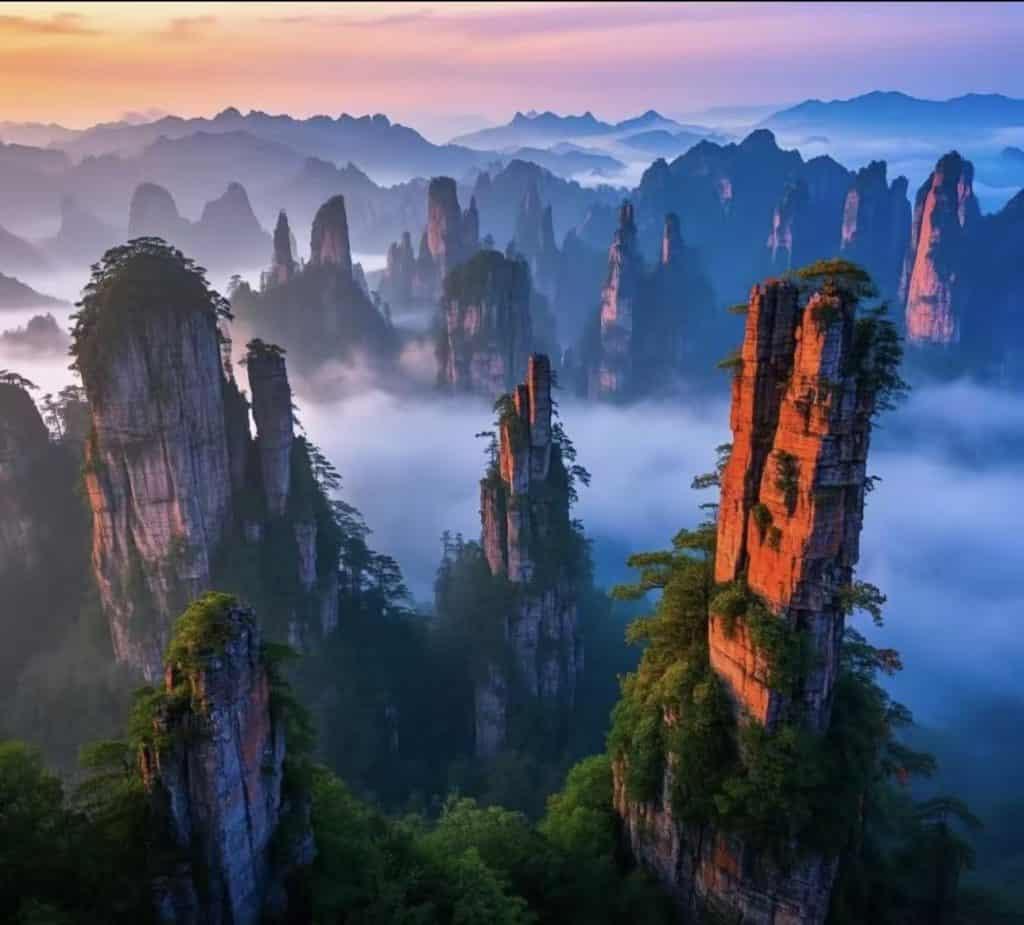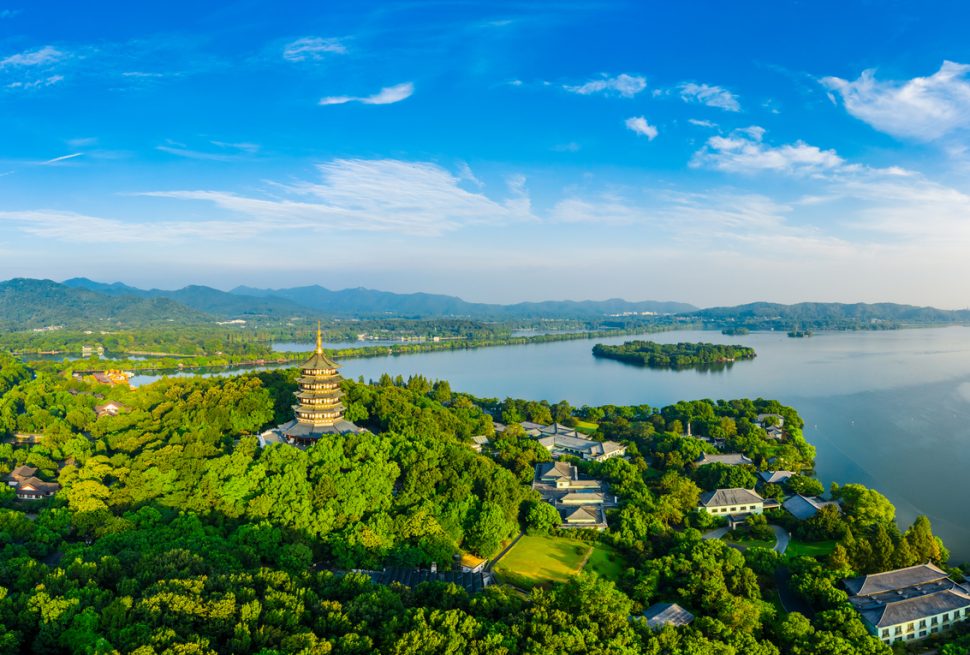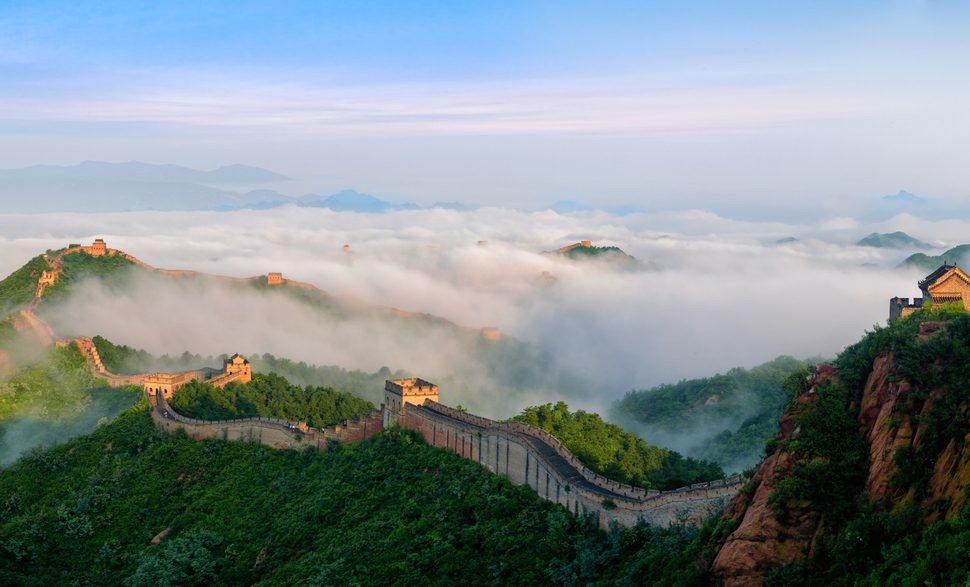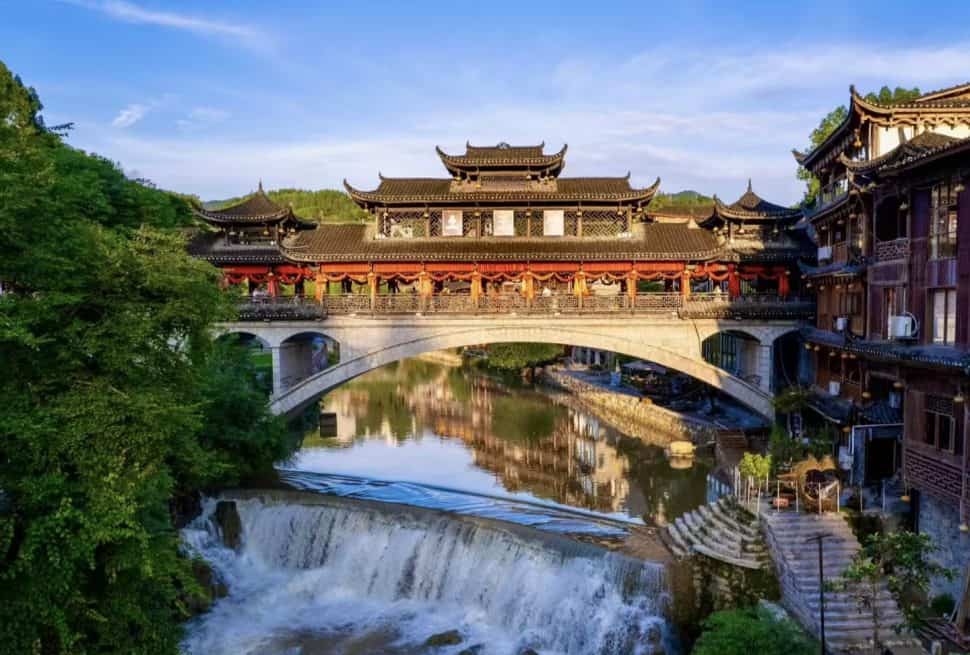Introduction: Where Avatar Comes to Life
Picture this: sandstone pillars rising over 600 feet through dense fog, their peaks disappearing into clouds. Narrow rock spires clustered so thick they form a vertical maze. Valleys so deep you can’t see the bottom, carpeted in subtropical forest that’s existed for millions of years.
This is Zhangjiajie, tucked away in the mountains of Hunan Province. When director James Cameron‘s team visited in 2008, they found the inspiration for Pandora’s “Hallelujah Mountains” in Avatar. One peak was even officially renamed “Avatar Hallelujah Mountain” after the film’s release.
Since then, this once-obscure corner of central China has drawn travelers from around the world—and the reality lives up to the hype. The landscape feels prehistoric, like you’ve stepped back to a time when the earth was still forming itself.
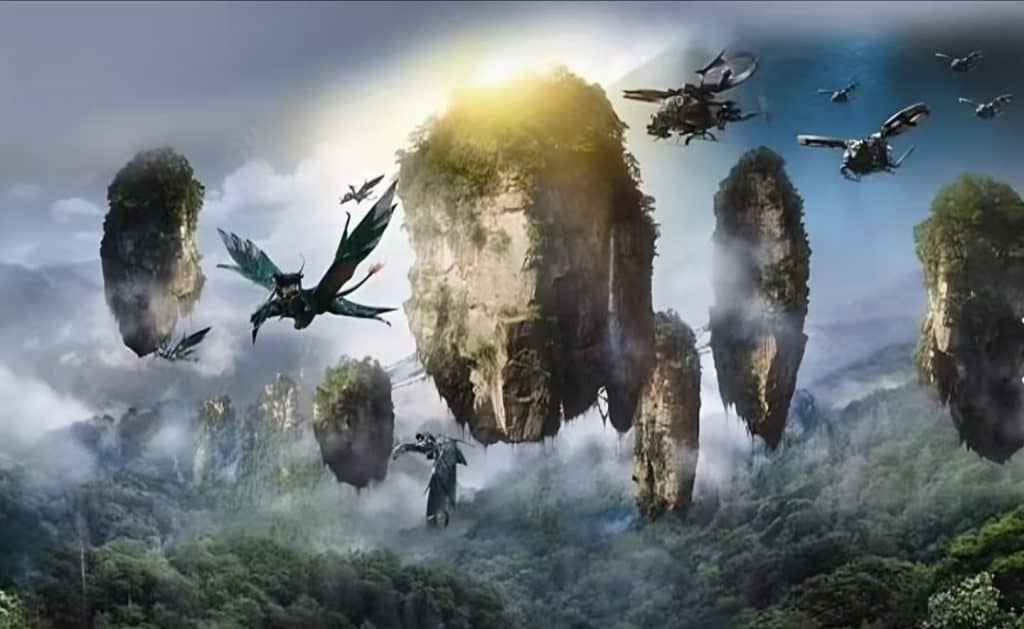
Why Visit Zhangjiajie
Most visitors come for the otherworldly rock formations that seem to defy gravity. But beyond the Avatar connection, this UNESCO World Heritage Site offers something increasingly rare: true wilderness less than a day’s journey from major Chinese cities.
You’ll find yourself walking through canyons where waterfalls echo off 1,000-foot cliffs, riding cable cars through layers of mountain mist, and watching macaques swing through ancient trees along crystal-clear streams. The infrastructure here strikes an unusual balance—well-developed enough for comfort, remote enough to feel like an adventure.
If you’re drawn to dramatic natural landscapes, challenging hikes, or simply want to experience one of China’s most striking national parks, Zhangjiajie delivers. Just come prepared for crowds during peak season and weather that can shift from brilliant sun to dense fog in minutes.
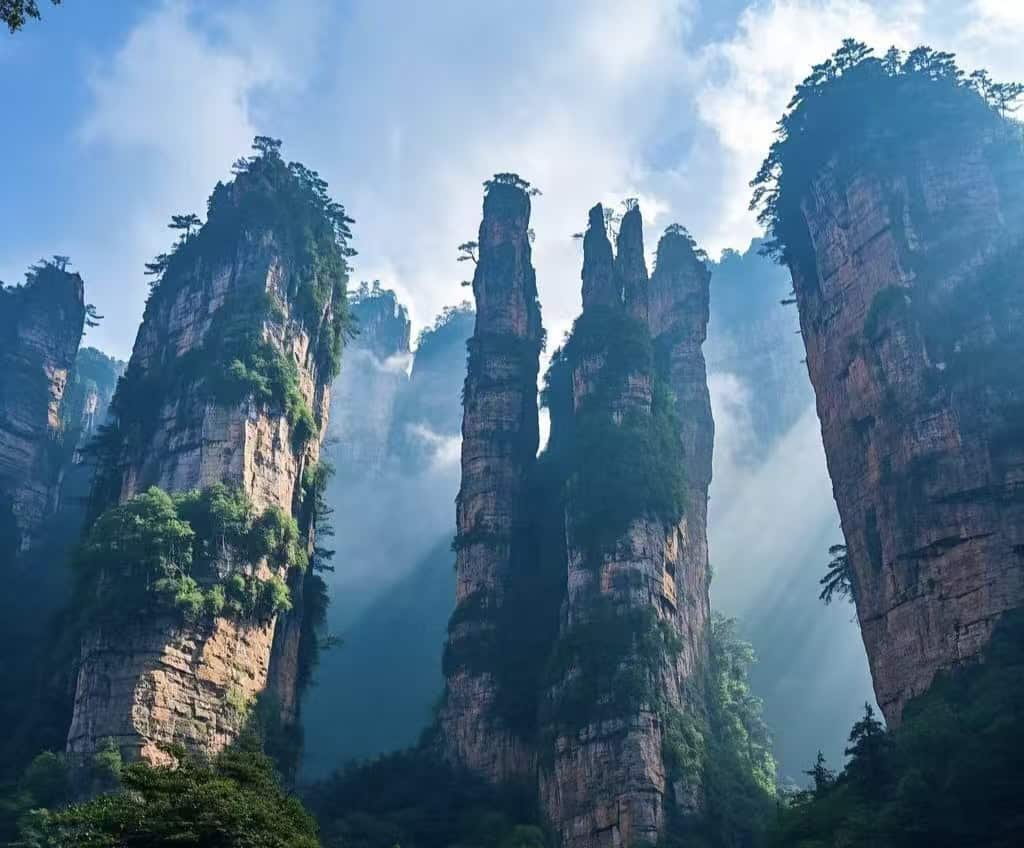
Planning Your Visit: Two Days Minimum
Most travelers allocate 2-3 days to see Zhangjiajie’s highlights properly. The region centers around two distinct areas:
Zhangjiajie National Forest Park (also called Wulingyuan Scenic Area) – The main attraction featuring the Avatar-inspiring stone pillars. This vast park encompasses multiple scenic zones and requires at least a full day, preferably two.
Tianmen Mountain – A standalone peak right next to downtown, famous for its natural arch and glass walkways. Half a day to a full day.
Both areas require separate tickets and are about 30-40 minutes apart by car. You can visit them in either order, though I recommend starting with the National Forest Park if you only have time for one.
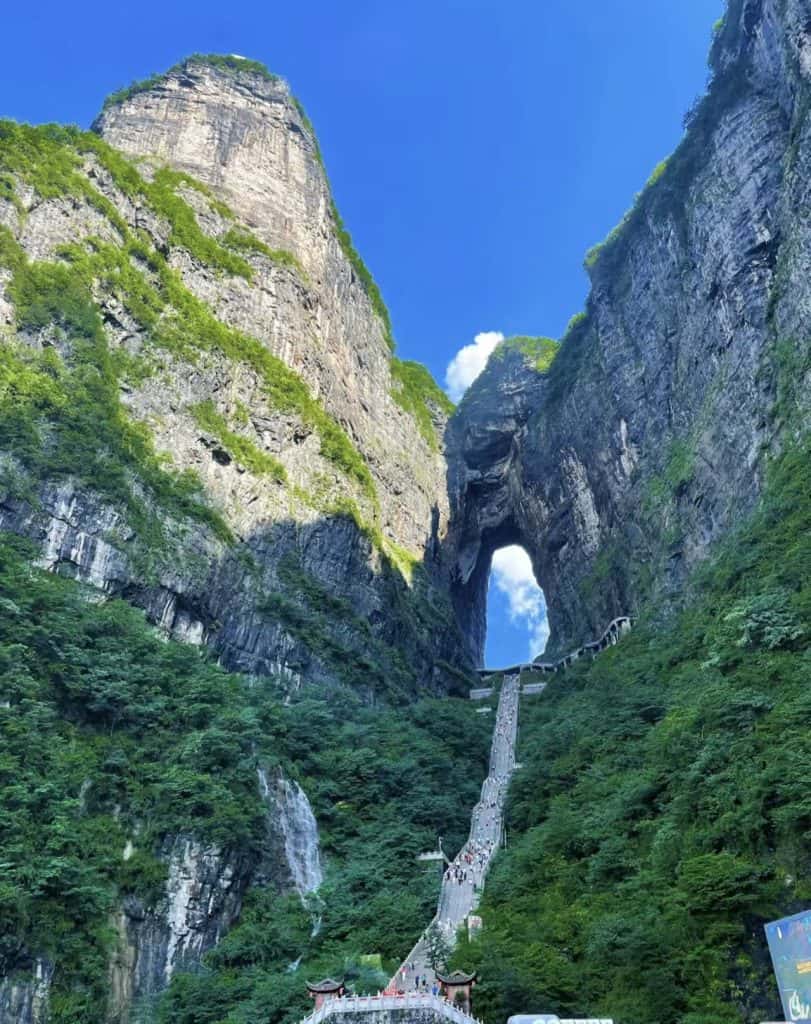
Zhangjiajie National Forest Park
This UNESCO-designated park sprawls across 264 square miles of sandstone karst formations. The geology here is unique—quartzite-sandstone pillars created over 380 million years through uplift and erosion. What you’re seeing is essentially ancient seabed, now thrust skyward and carved by wind and water into thousands of free-standing columns.
The park divides into several scenic areas, each accessible by a combination of hiking trails, shuttle buses, cable cars, and elevators. Here’s where to focus your time:
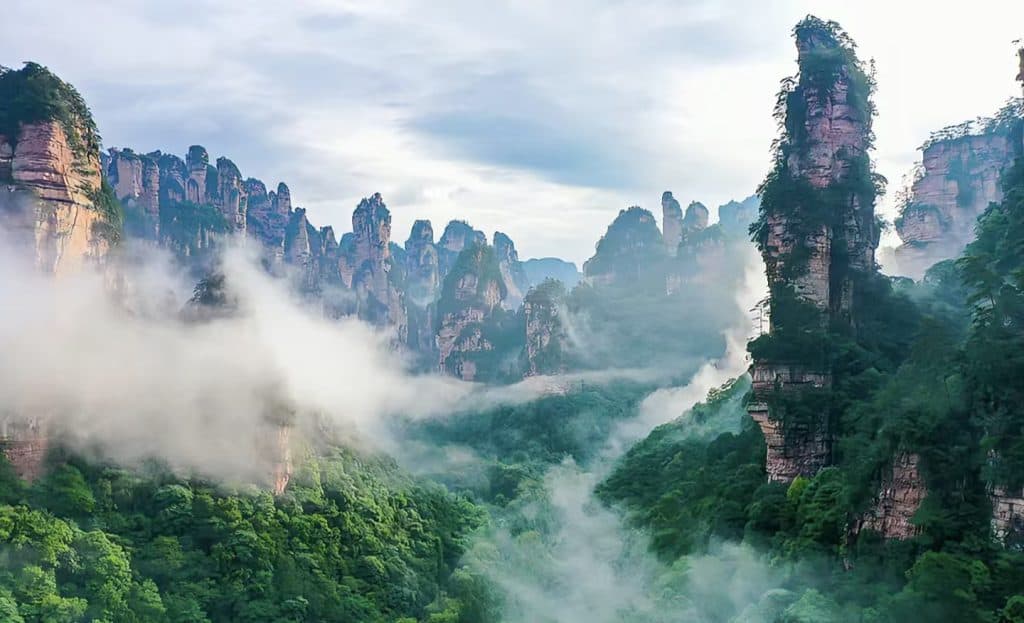
Yuanjiajie – The Avatar Zone
This is the area that sparked Cameron’s imagination, and for good reason. The viewing platforms here place you at eye level with stone pillars that rise from the valley floor below, creating an impossible-looking forest of rock towers.
The star attraction is the “Avatar Hallelujah Mountain” (formerly called Qiankun Pillar)—a single column soaring over 3,500 feet from base to peak. On misty mornings, when clouds settle into the valleys, these pillars appear to float above a white sea. It’s a spectacular sight, though you’ll be sharing the viewpoints with crowds during summer and holidays.
Getting there: Most visitors take the Bailong Elevator, an external glass lift built into the cliff face. It ascends nearly 1,000 feet in just over a minute, shooting up through rock faces and emerging at the top of the plateau. The ride itself is thrilling (or terrifying, depending on your view of heights), and once you’re up top, it’s a relatively easy 2-3 hour walk along paved paths to the main viewpoints.
Alternative route: You can hike up instead via the Golden Whip Stream trail, but it adds 2-3 hours of steep climbing.
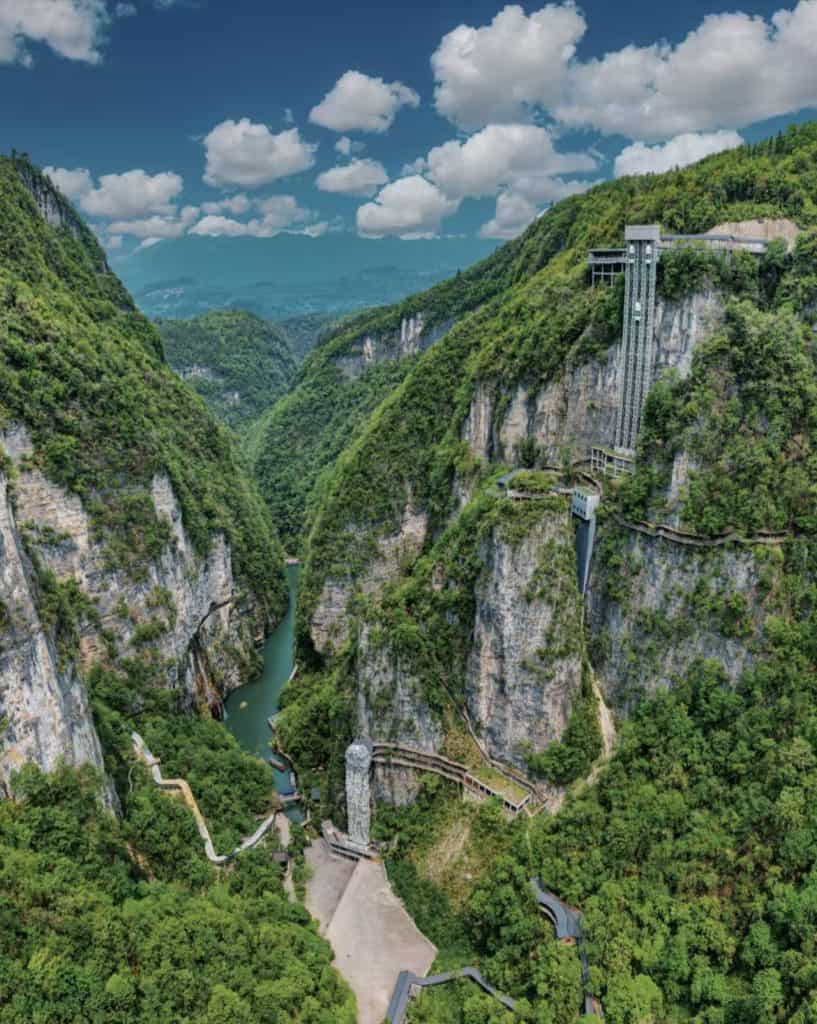
Tianzi Mountain – The Emperor's Overlook
If Yuanjiajie shows you the pillars up close, Tianzi Mountain pulls back for the sweeping panorama. From this ridge, you look out over what locals call the “peak forest”—literally thousands of sandstone columns stretching to the horizon in every direction.
The name translates to “Son of Heaven Mountain,” supposedly named after a local minority group leader who declared himself emperor here in the 14th century. The viewpoints live up to the imperial title.
After rain, clouds flow through the valleys below like a slow-motion river, creating the famous “sea of clouds” effect. Photographers camp out here for sunrise, though be warned: the weather is unpredictable, and clear views aren’t guaranteed.
Getting there: Take the Tianzi Mountain Cable Car up (about 10 minutes), then walk the ridge trail. You can also take a shuttle bus from Yuanjiajie if you’re already in that area.
Pro tip: If you’re doing both Yuanjiajie and Tianzi Mountain in one day, take the Bailong Elevator up, shuttle bus between areas, and cable car down from Tianzi Mountain.
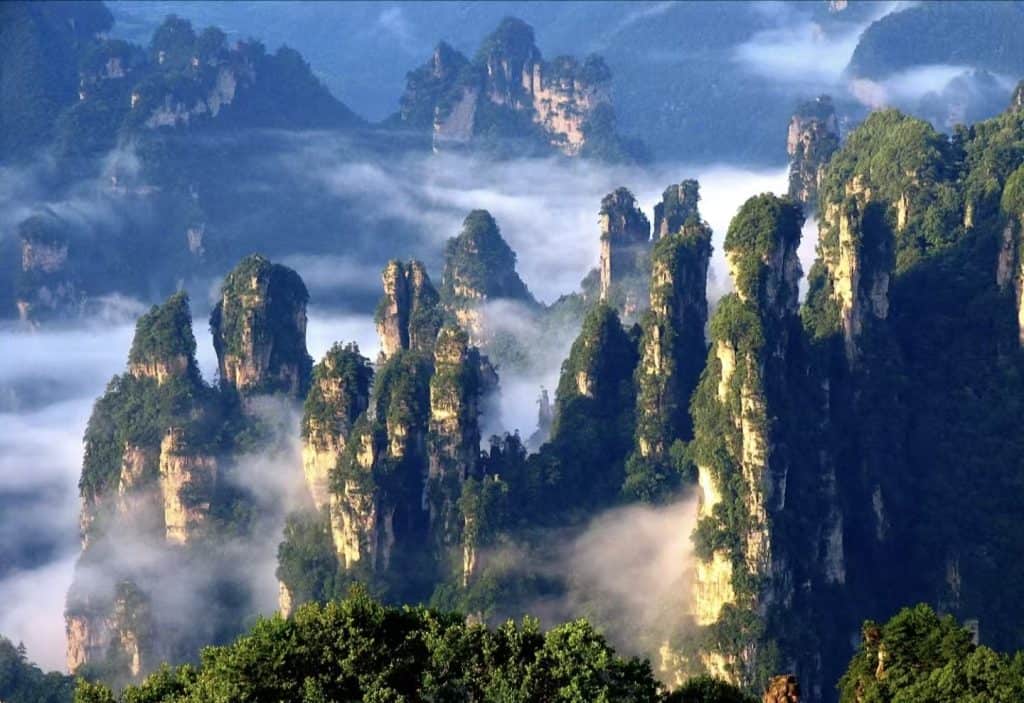
Golden Whip Stream – The Valley Floor
For a complete contrast to the elevated viewpoints, walk the Golden Whip Stream trail—a flat, 4.6-mile path that winds along a clear river through the valley floor. Cliffs tower on both sides, some nearly 1,000 feet tall, covered in vegetation that changes with the seasons.
This is where you’ll encounter Zhangjiajie’s wild macaques. They’re habituated to humans and unafraid, which makes for great photos but requires caution. Keep your distance, don’t feed them, and secure any bags or food—these monkeys are skilled thieves. The park posts rangers along the trail, but ultimately you’re responsible for avoiding close contact.
The trail takes about 2.5-3 hours at a leisurely pace. It’s popular with families and anyone looking for an easier walk, though it can get crowded midday. Start from Shuiraosimen (Water Winding Four Gates) station if you specifically want to see monkeys—they’re most common in the first third of the trail.
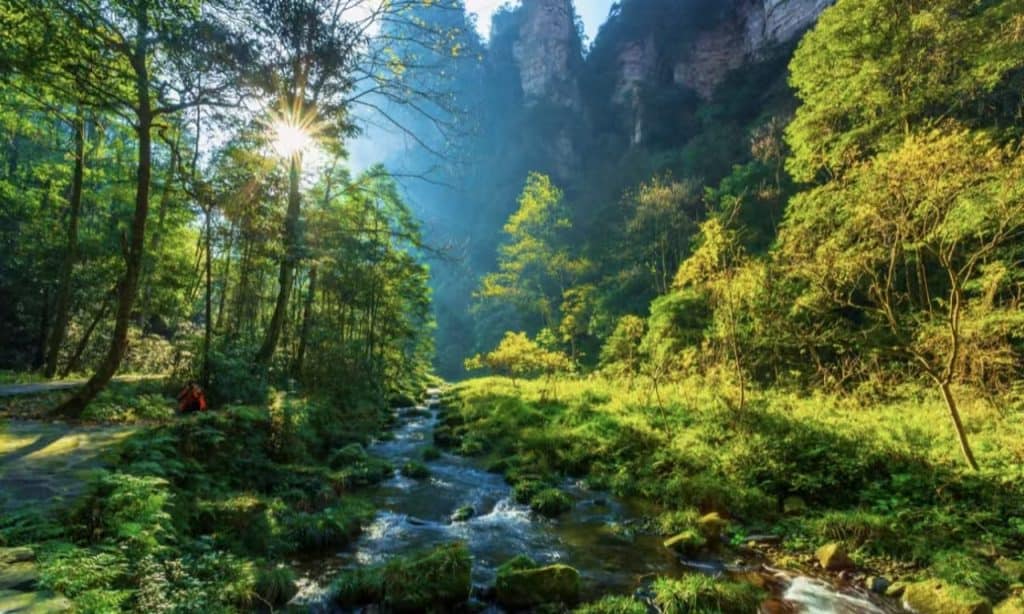
Huangshi Village – For Ambitious Hikers
There’s an old saying among Chinese tourists: “You haven’t truly seen Zhangjiajie without climbing Huangshi Village.” It’s a steep hike—roughly 3 hours up, 2 hours down—but rewards you with 360-degree views from a natural plateau at 3,540 feet.
This is less crowded than other areas, partly because the climb deters many visitors, and partly because you can accomplish similar views more easily elsewhere. But if you want a genuine workout and prefer solitude, consider it. The sunrise view from the top is exceptional on clear days.
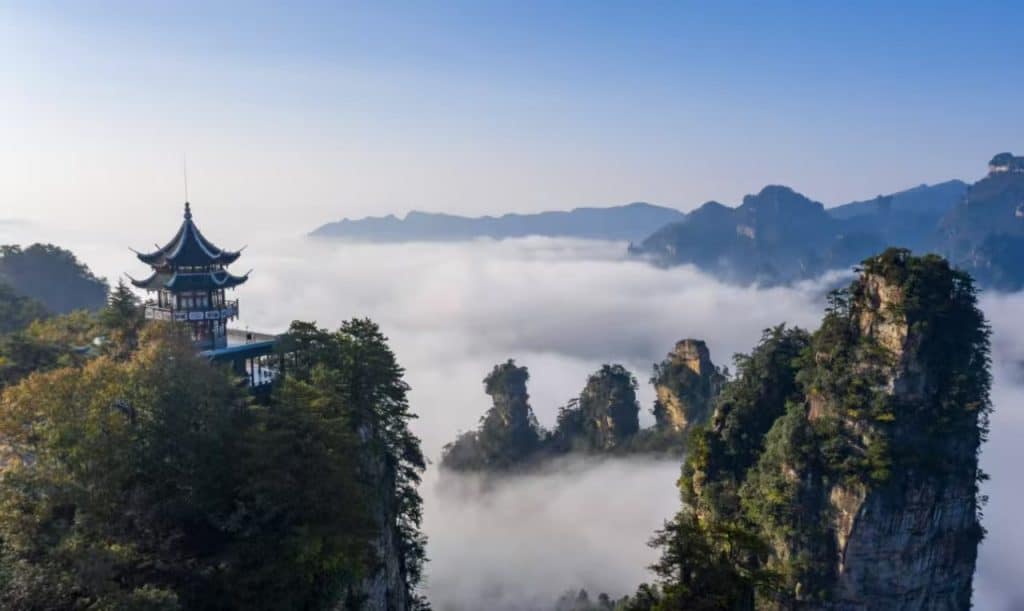
Tianmen Mountain – Heaven's Gate
Rising straight up from the edge of downtown Zhangjiajie, Tianmen Mountain offers a completely different experience from the National Forest Park. Where the forest park spreads horizontally across valleys and plateaus, Tianmen Mountain is all about vertical drama.
Your journey begins with the world’s longest passenger cable car—7,455 meters (4.6 miles) of cable stretching from the city center to the summit at 4,980 feet. The 30-minute ride alone is worth the price, climbing gradually past neighborhoods, over forests, up cliff faces, and finally breaking through the clouds to reach the top station.
Once up top, you’ll find several attractions:
Glass Skywalk – A transparent walkway extending from the cliff edge, suspended hundreds of feet above the valley. If you’re afraid of heights, you can skip it. If you want the full experience, the park requires cloth shoe covers to protect the glass and provides them free at the entrance.
Guigu Plank Road – A more substantial cliffside path carved into the mountain face. This 1.5-mile walkway hugs the cliff, offering expansive views without the vertigo of the glass sections. The crowds are thinner here, making it easier to stop and take photos.
Tianmen Cave (Heaven’s Gate) – The mountain’s namesake: a natural arch 430 feet tall, formed when part of the cliff face collapsed. It’s impressive in scale, though the 999 stone steps leading up to it can be grueling. Whether you climb the steps or take the escalator is up to you—both get you to the same place.
Tianmen Temple – A small Buddhist temple near the summit. It’s an active place of worship, so maintain respectful behavior if you visit.
Route choices: The park offers two ticket options:
- Route A: Cable car up, explore the summit, cable car down
- Route B: Cable car up to the cave, climb 999 steps, explore the summit, cable car down
I recommend Route A if you want the easier option and the best views. Route B appeals to hikers who want the physical challenge of the steps.
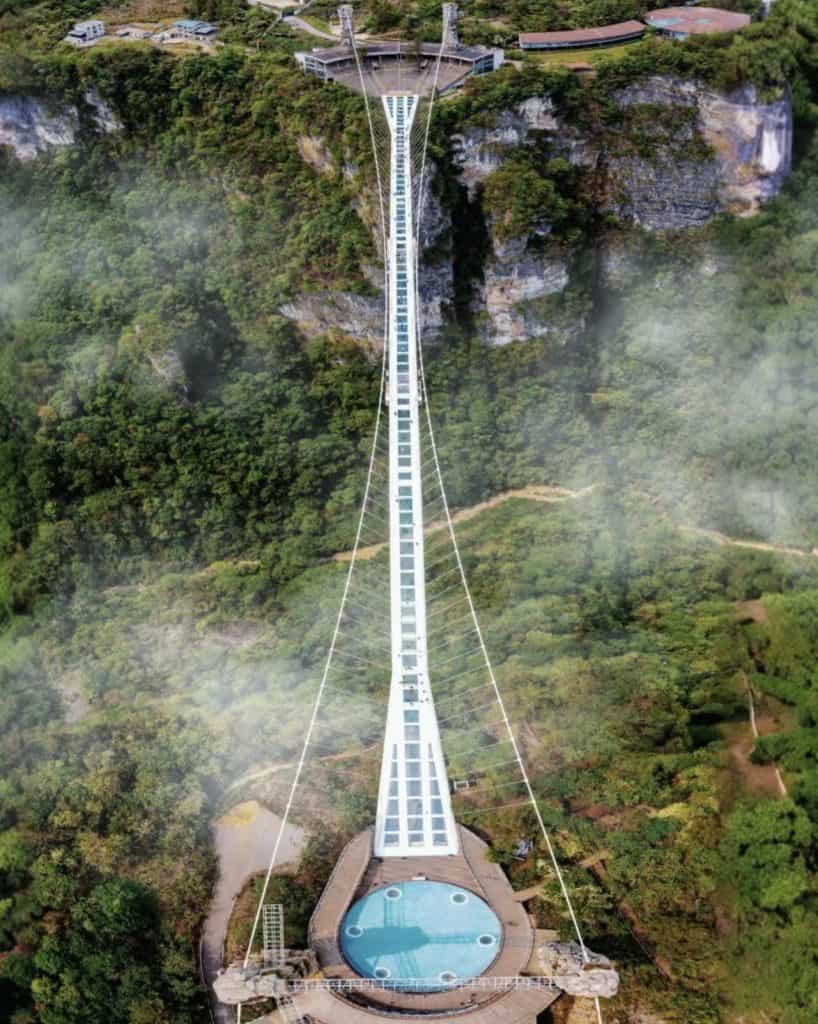
Getting to Zhangjiajie
International Access
Most international travelers fly into a major Chinese city first, then connect to Zhangjiajie:
By Air: Zhangjiajie Hehua International Airport (DYG) has direct flights from Beijing, Shanghai, Guangzhou, Chengdu, and other major Chinese cities. Flight time from Shanghai is about 2 hours. From the airport, it’s a 30-minute taxi ride to downtown Zhangjiajie (¥80-100/$12-15) or 45 minutes to Wulingyuan (¥120-150/$17-22).
By Train: High-speed rail connects Zhangjiajie West Station to Changsha (2.5 hours), from where you can reach most of China. The train station is about 10 km from downtown. This is often cheaper than flying if you’re already elsewhere in China.
By Bus: Long-distance buses run from Changsha (4 hours) and other regional cities. This is the budget option but less comfortable than train or plane.
Local Transportation
Wulingyuan vs. Downtown: Two accommodation hubs exist. Wulingyuan sits right at the National Forest Park entrance—convenient if the park is your priority. Downtown Zhangjiajie has more hotel options and puts you next to Tianmen Mountain, but it’s 30-40 minutes by taxi to the forest park.
Between sites: Taxis or ride-hailing apps (DiDi is the Chinese Uber equivalent) work well. Expect ¥80-120 ($12-17) between downtown and Wulingyuan. The park runs shuttle buses between scenic areas inside the National Forest Park (included with admission).
Important note: English is not widely spoken outside major hotels. Download a translation app.
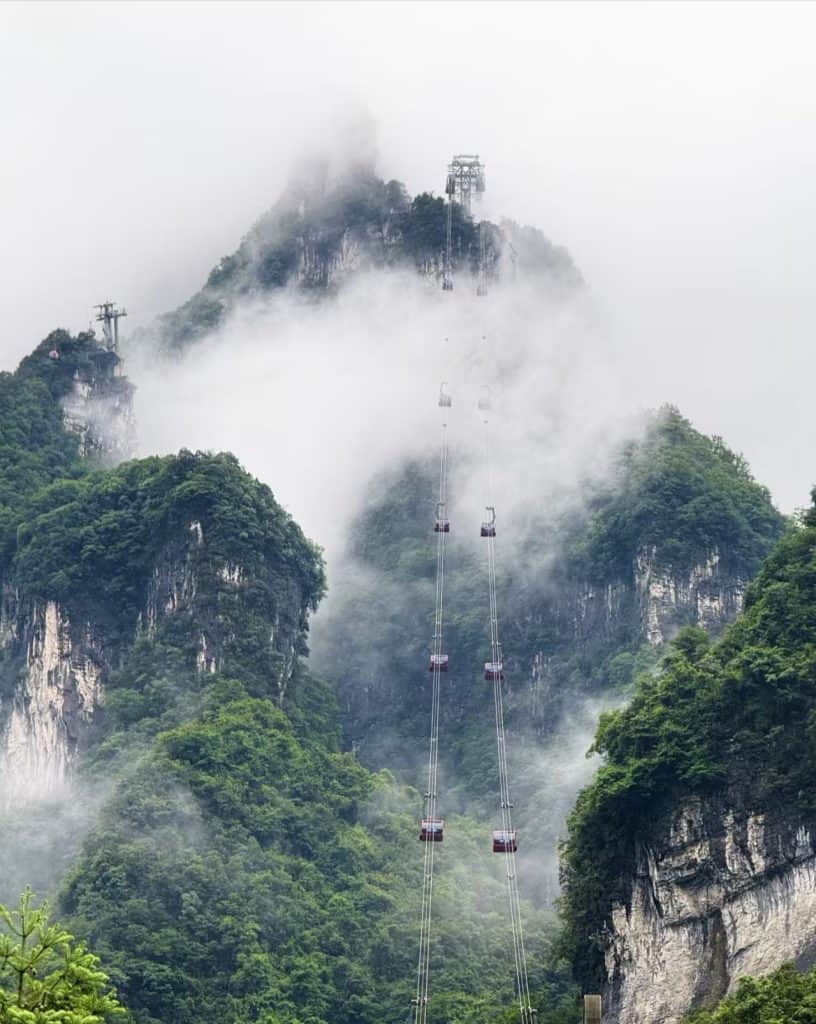
Where to Eat in Zhangjiajie
Hunan cuisine ranks among China’s spiciest, heavy on chili peppers and fermented flavors. The local Tujia minority group adds their own specialties to the mix. Don’t expect mild food—even dishes that seem innocuous often pack heat.
Local dishes to try:
Tujia Smoked Pork (腊肉) – Pork belly preserved through smoking, giving it a deep, rich flavor. Usually served sliced thin and stir-fried with vegetables. The smoking process dates back centuries as a preservation method in this humid climate.
Spicy Fish Head (剁椒鱼头) – A massive fish head steamed with Hunan’s signature chopped chili peppers. The meat is tender and infused with heat. Not for timid palates.
Sour Soup Fish (酸汤鱼) – A hot pot featuring fish in tangy, spicy broth made from fermented tomatoes and chilis. More approachable than the fish head if you’re not ready for extreme spice.
Stir-fried Fern (炒蕨菜) – A foraged mountain vegetable, common in Zhangjiajie. Tastes like a cross between asparagus and green beans.
Tujia Glutinous Rice Cake (糯米糍粑) – A sweet or savory snack made from pounded sticky rice. Street vendors sell these hot off the grill.
Where to eat:
Small family-run restaurants around Wulingyuan town offer the most authentic food at reasonable prices (¥40-60/$6-9 per person). Look for places packed with locals. Inside the National Forest Park, you’ll find overpriced tourist restaurants—eat before entering or pack snacks.
Downtown Zhangjiajie has more upscale options if you want a break from spice. Several hotpot restaurants cater to tourists with adjustable spice levels.
For sensitive stomachs: Request dishes “不要辣” (búyào là – not spicy) or “微辣” (wēi là – mildly spicy), though results vary. Hotels can usually accommodate Western breakfast options.

Practical Tips for Your Visit
Tickets and costs: The National Forest Park offers a 4-day pass (¥225), allowing unlimited re-entry. This is worthwhile even if you only stay 2 days—it removes time pressure. Keep your ticket safe; you’ll need it to enter the park each day. Major attractions like the Bailong Elevator (¥72) and Tianzi Mountain Cable Car (¥67) require separate payment.
Accommodation strategy: If you’re spending two full days in the National Forest Park, consider staying inside the park at Wulingyuan. This lets you start early before crowds arrive and catch sunset without rushing. For one-day park visits plus Tianmen Mountain, stay downtown.
What to pack:
- Comfortable hiking shoes with grip (trails get slippery)
- Rain jacket (weather changes quickly)
- Layers (temperature varies with elevation)
- Sunscreen and hat (high UV at altitude)
- Water bottle (refill stations exist but bring your own)
- Snacks (food inside the park is expensive and mediocre)
- Portable charger (you’ll use your phone camera extensively)
Timing your day: Gates open around 7 AM. Arrive early—the first 1-2 hours offer the best lighting and smallest crowds. Most tour groups arrive 9-11 AM. If you can visit on weekdays outside summer and national holidays, you’ll have a significantly better experience.
Crowd management: The park limits daily visitors but can still feel packed during peak season. Less famous areas like Huangshi Village and Yang Family Village see far fewer people if you want to escape.
Physical requirements: The National Forest Park involves considerable walking—expect 10,000-20,000 steps per day depending on your itinerary. Most paths are paved or wooden boardwalks, but elevation changes and stairs are constant. The park is accessible for moderate fitness levels, especially if you use elevators and cable cars, but not suitable for anyone with serious mobility issues.
Weather preparation: Check forecasts, but don’t rely on them completely. Mountain weather is notorious for sudden changes. The “sea of clouds” effect that makes photos spectacular also means reduced visibility—you might not see the famous pillars at all on foggy days. Accept this as part of the experience rather than a failure.
Photography: Sunrise and late afternoon offer the best light. For the classic Avatar-style misty peaks, you need recent rain and morning timing. Overcast days create flat lighting but can produce dramatic fog effects. Bring a telephoto lens if you’re serious about photography—the pillars are often distant from viewpoints.
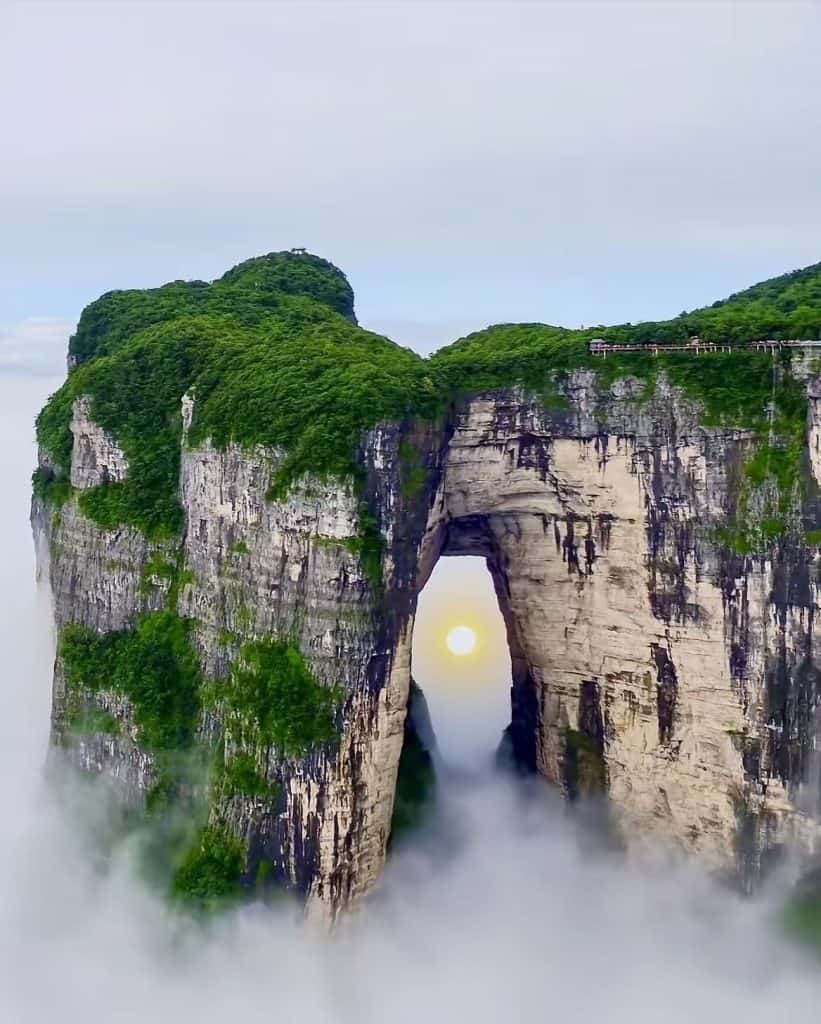
Common Questions
Do I need a guide? Not essential. The park is well-marked with English signage at major points, and maps are available. However, guides can help navigate efficiently, avoid crowds, and provide cultural context you’d otherwise miss. If you don’t speak Chinese, a guide significantly reduces stress.
Is it safe? Very safe. The main risks are slippery trails, crowded areas, and the monkeys. Watch your step, secure your belongings, and don’t antagonize wildlife.
Can I visit in one day? Technically yes, but you’ll only scratch the surface. Tianmen Mountain can be done in a half-day. The National Forest Park really needs two full days to see the major areas without exhausting yourself.
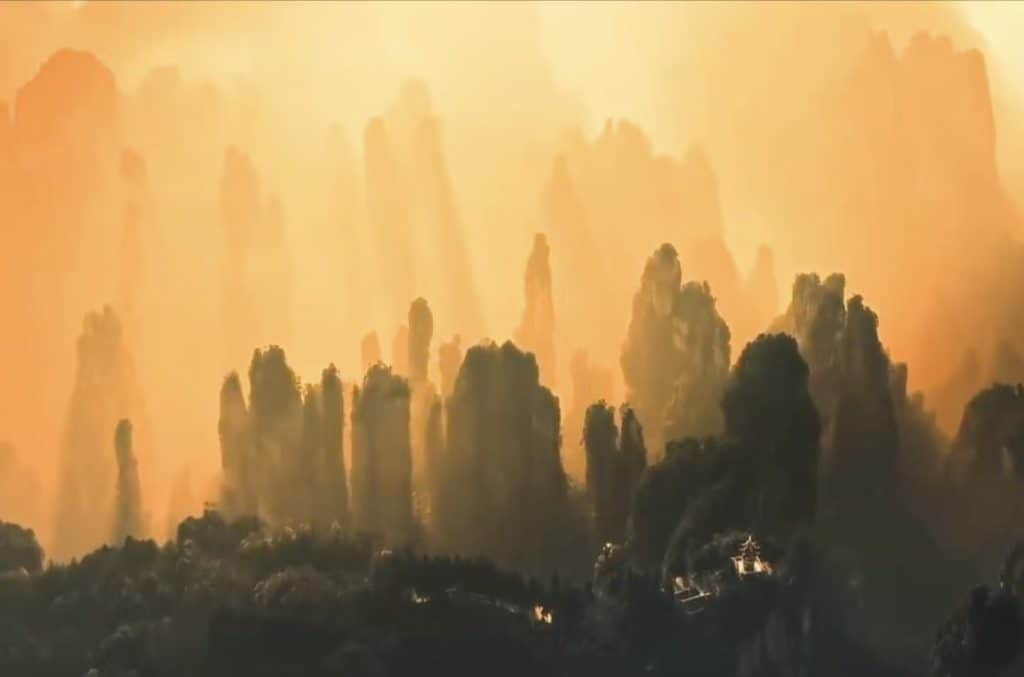
Final Thoughts
Zhangjiajie rewards travelers who come prepared for crowds, unpredictable weather, and language barriers. The landscape genuinely delivers on its “Avatar mountains” reputation—these formations exist nowhere else on Earth in quite this form.
What makes this place special isn’t just the view from a single platform or the thrill of a glass walkway. It’s the cumulative experience: morning mist burning off to reveal stone pillars; afternoon light slanting through valleys; the sound of waterfalls echoing up from unseen streams; the realization that this landscape has existed largely unchanged for millions of years.
Come with realistic expectations about crowds and infrastructure, respect the environment, and give yourself enough time to see the major areas properly. The Avatar connection brought Zhangjiajie to global attention, but the mountains themselves—ancient, massive, indifferent to human wonder—are what will stay with you long after you leave.
